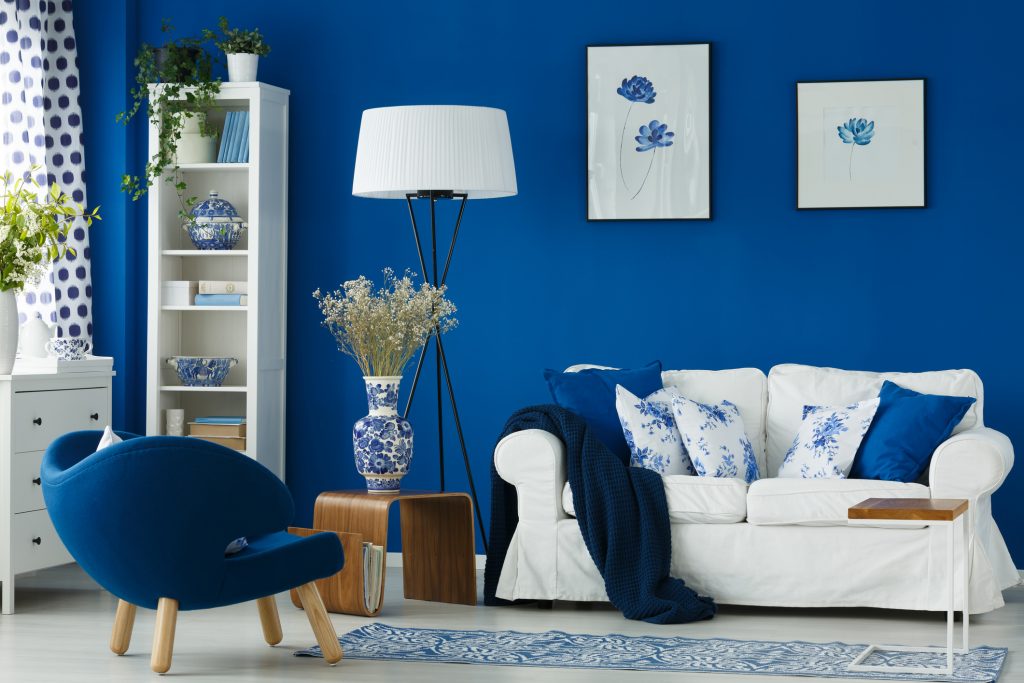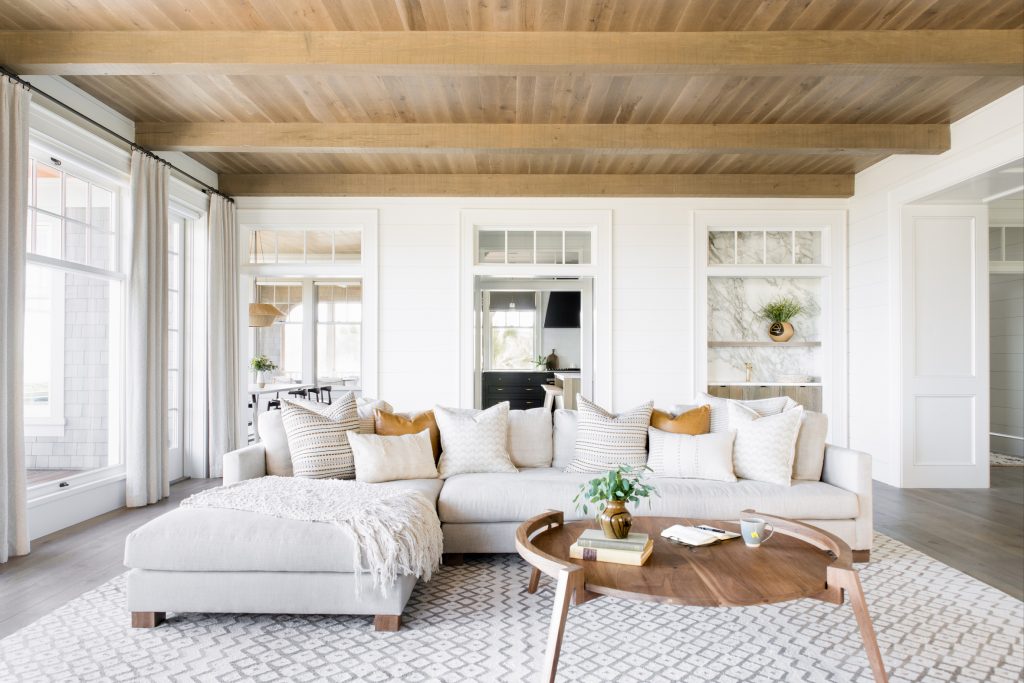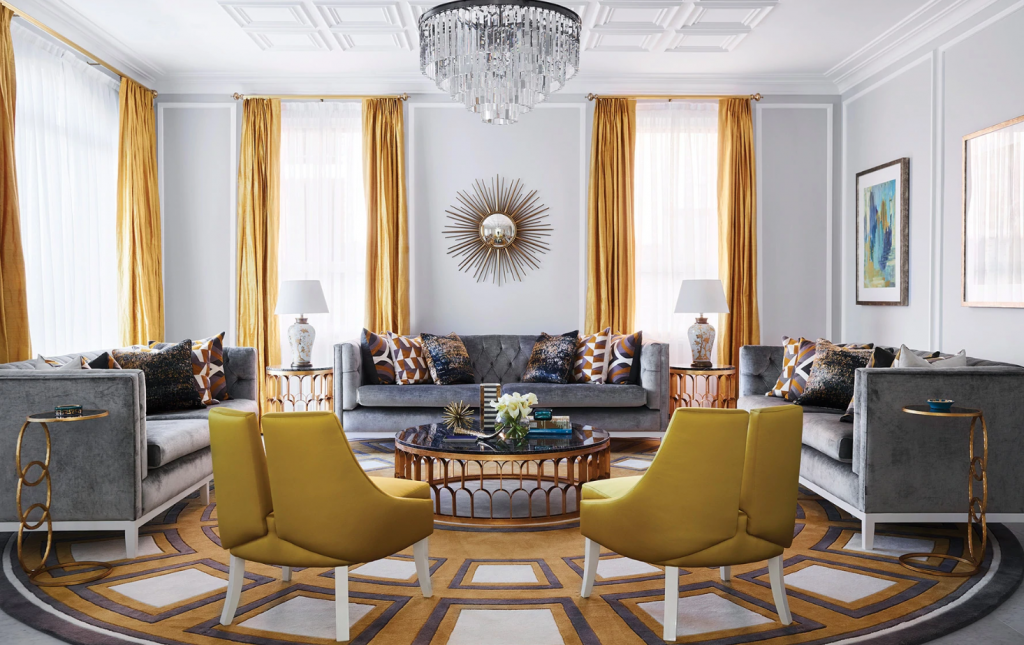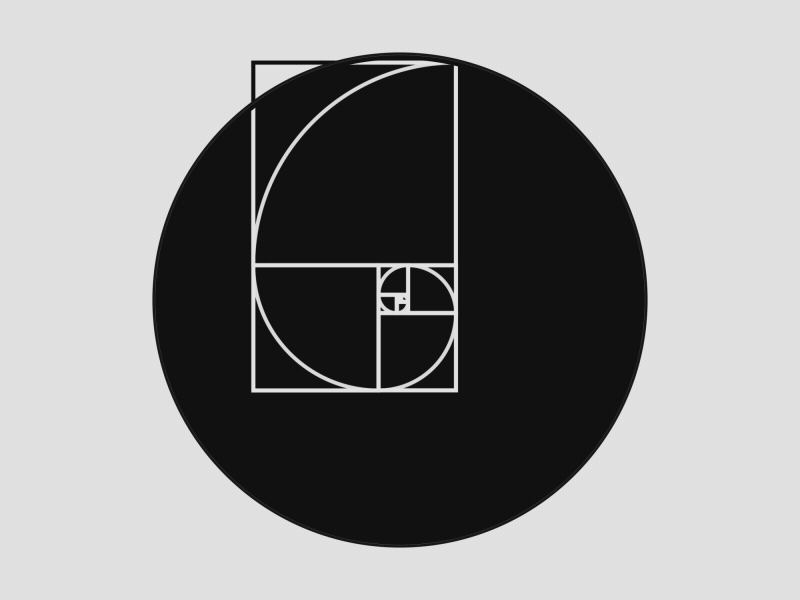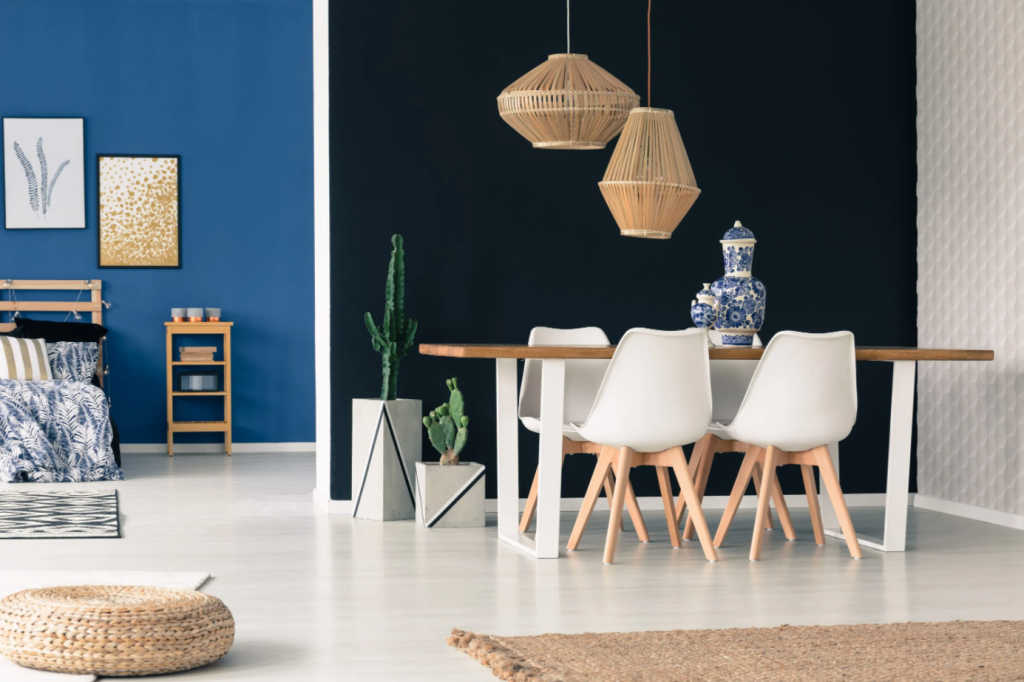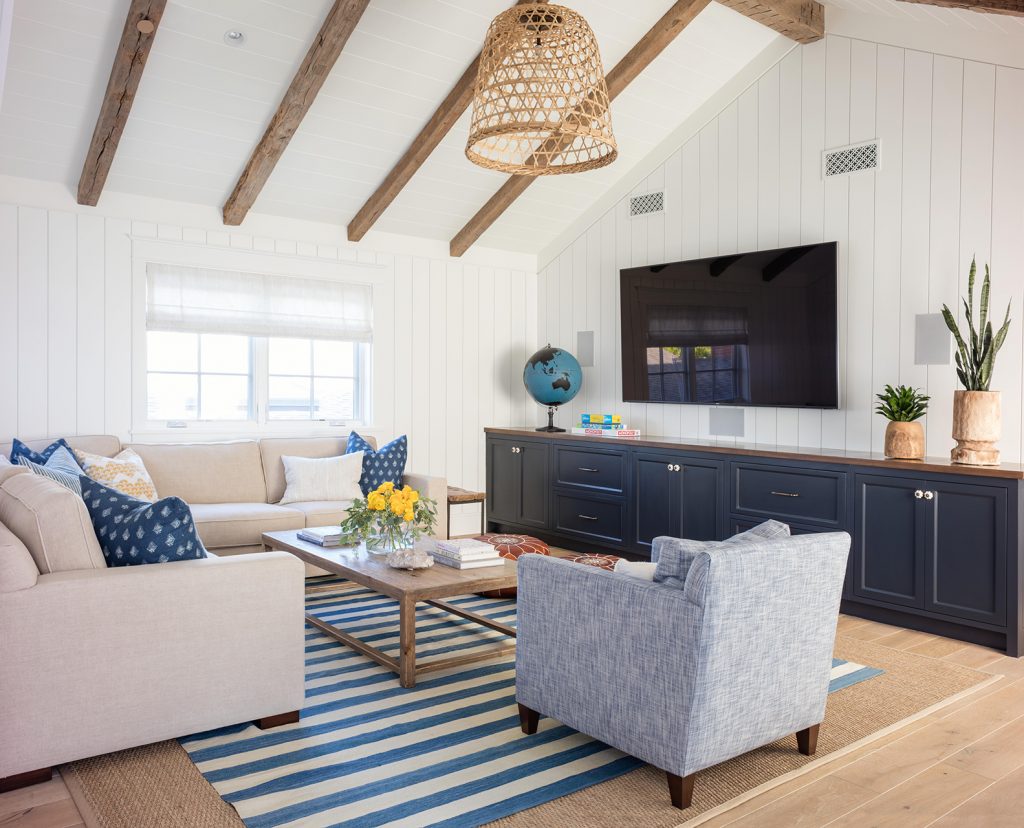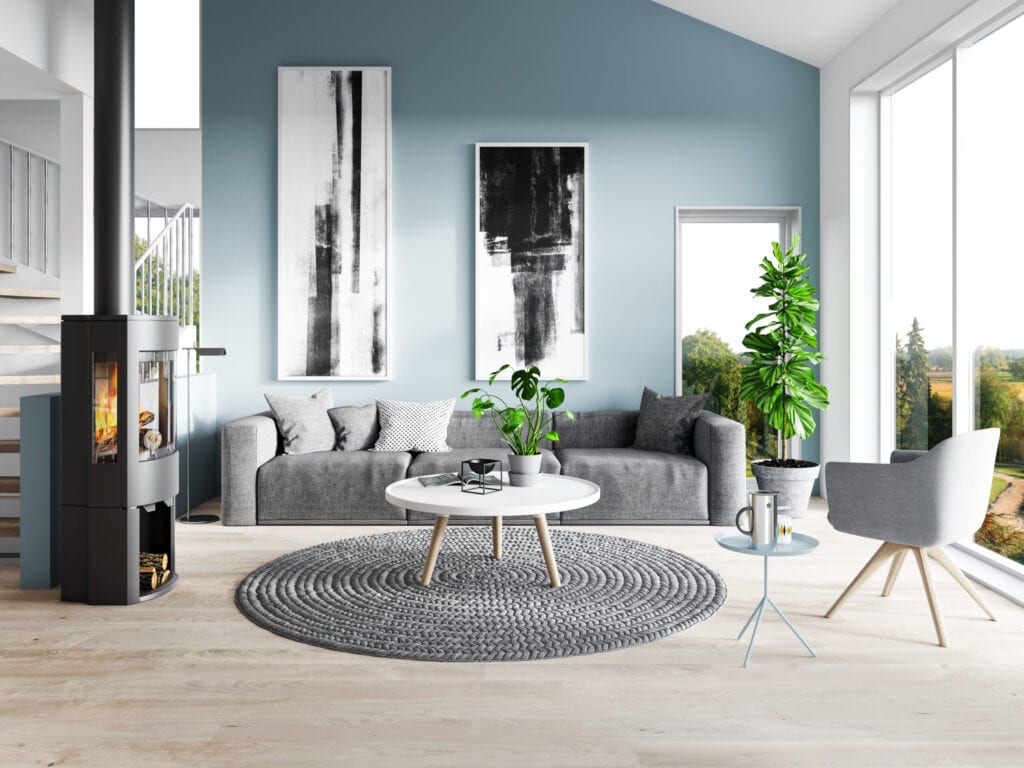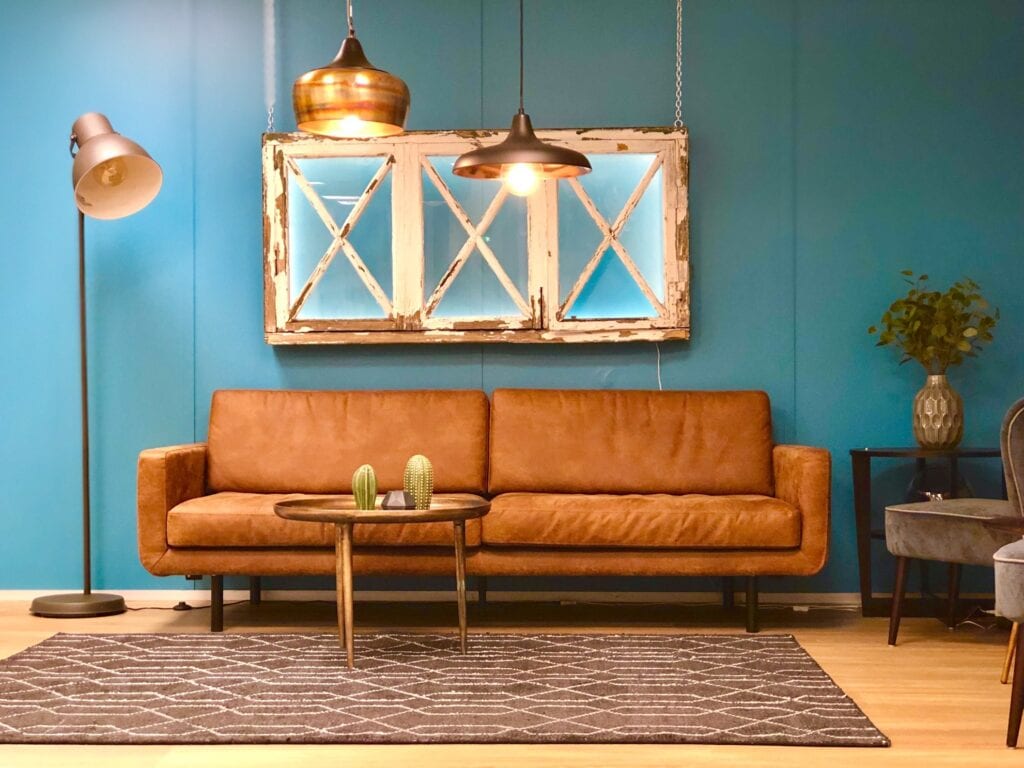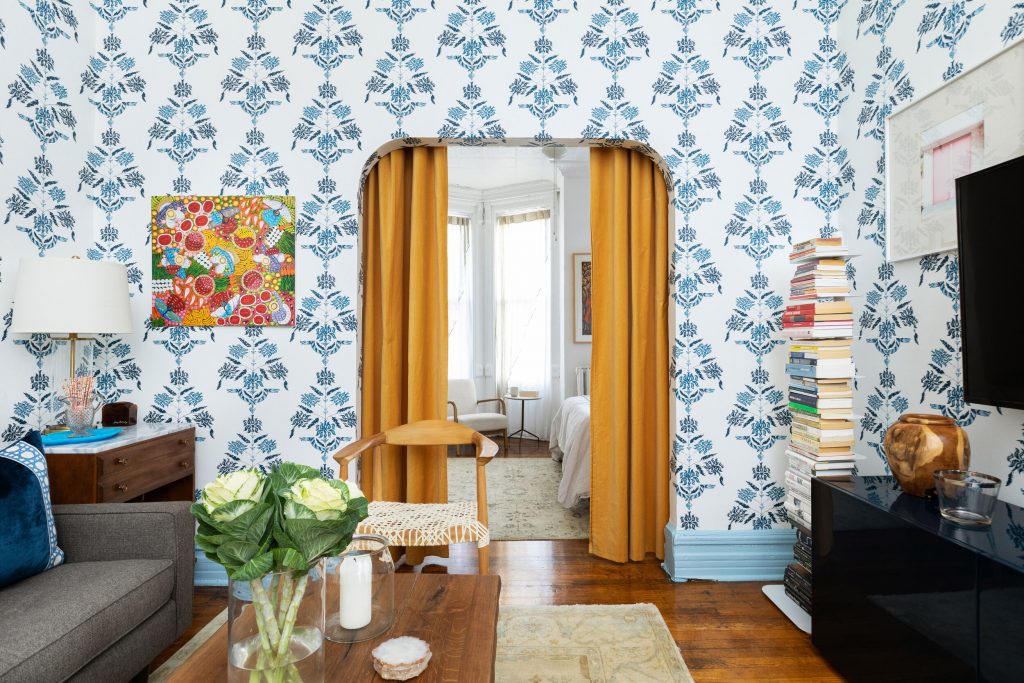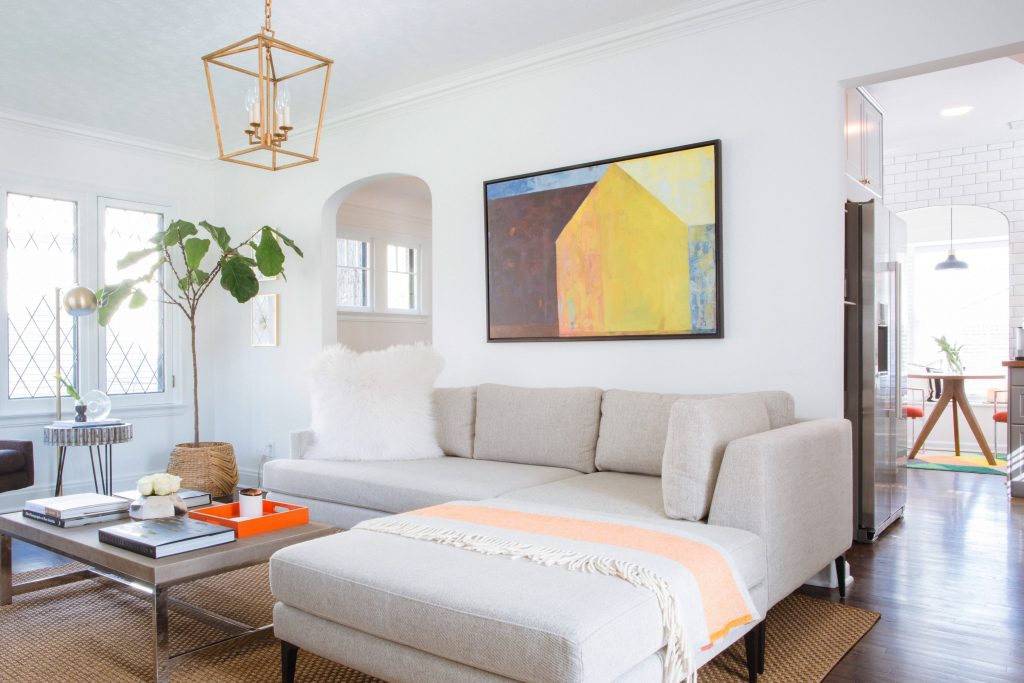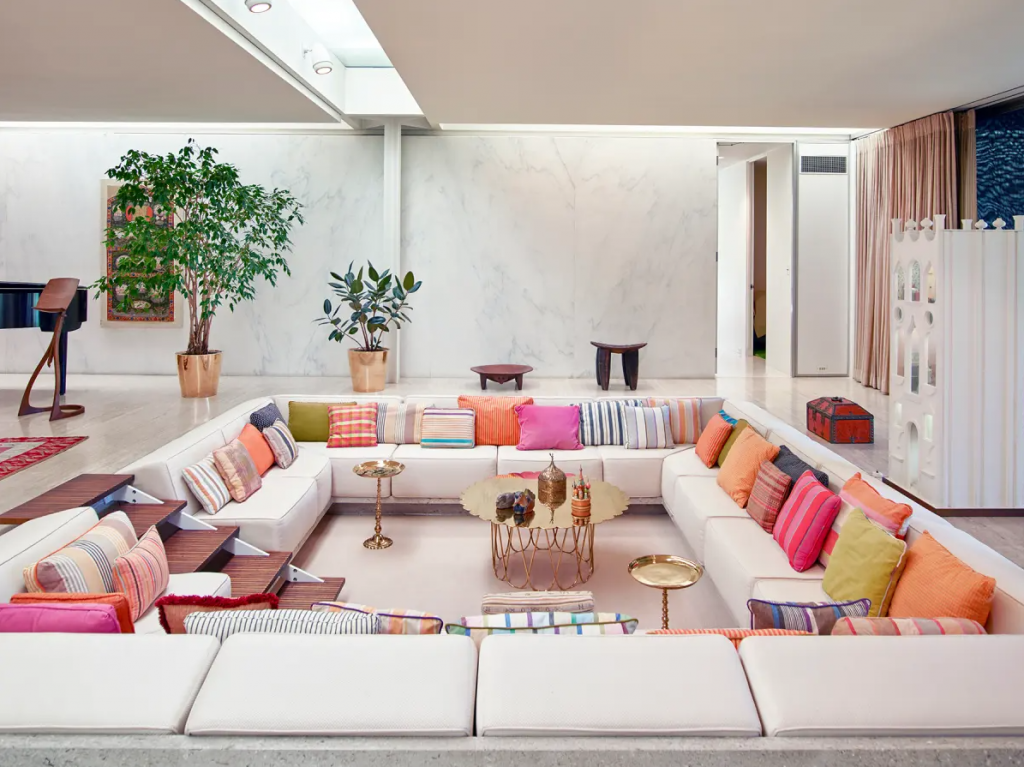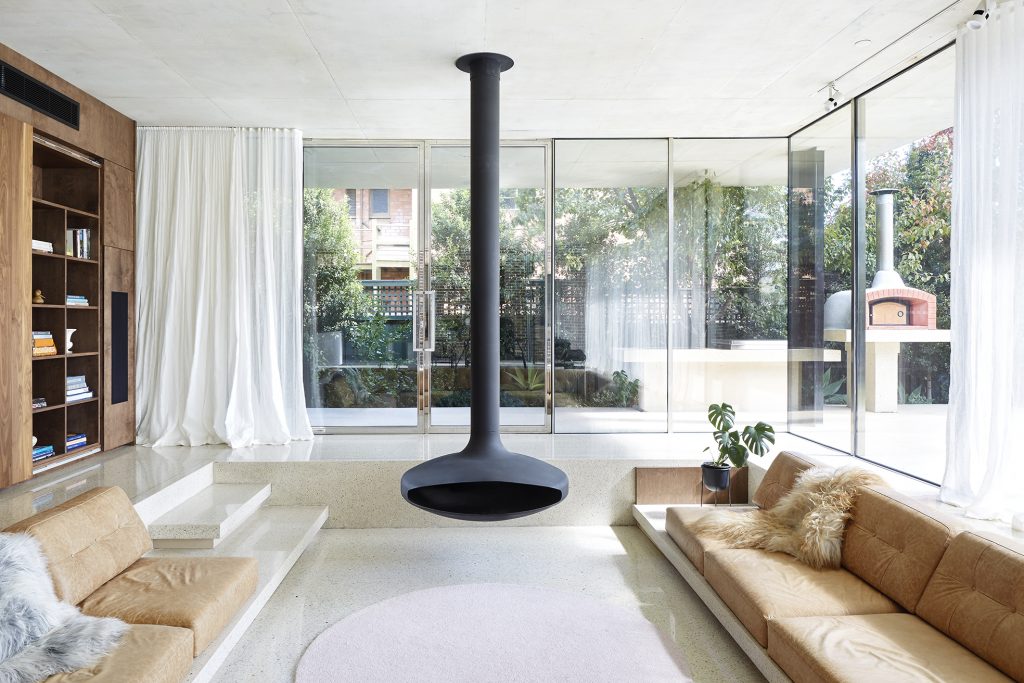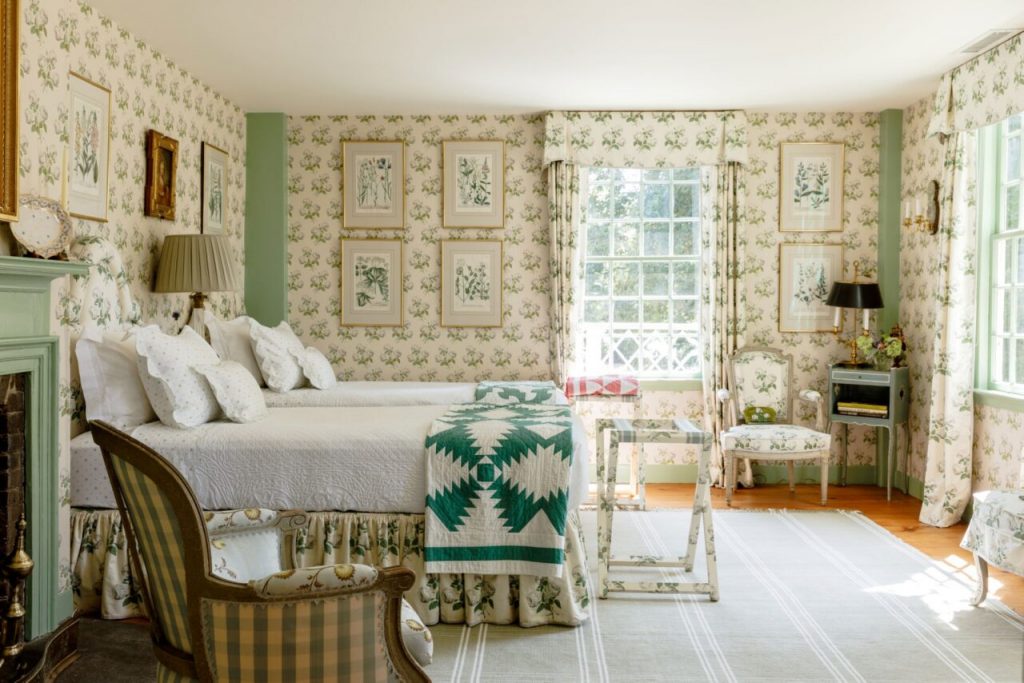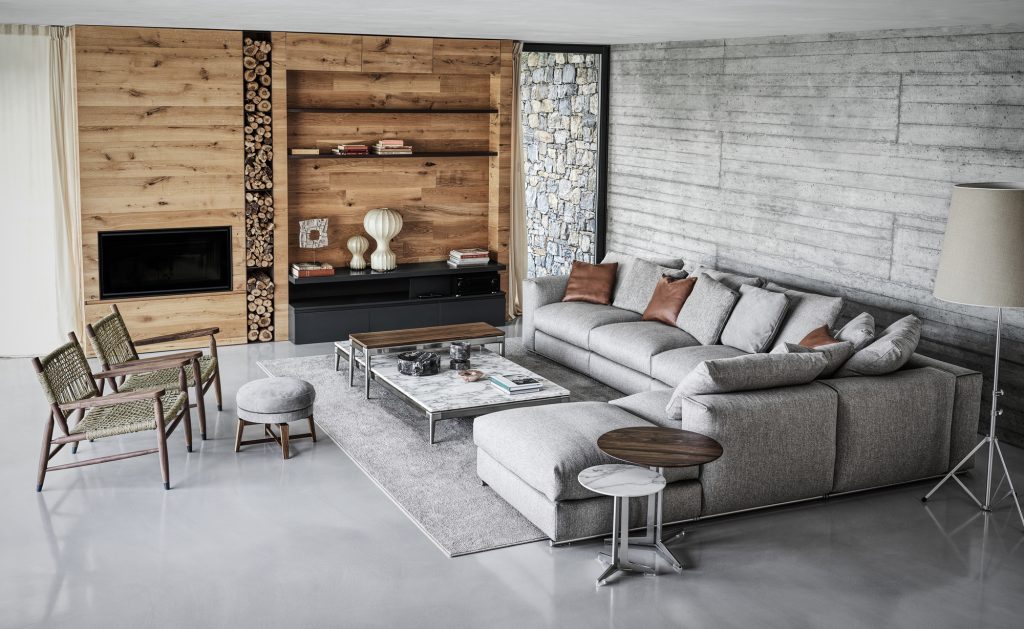What are Scale and Proportion in Interior Design?
Scale and proportion are two words that are sometimes used interchangeably in the interior design world. However, to truly understand design elements and principles, it’s essential to tell the difference between the two. Interior designers study these concepts for years to use the concepts in the form of design elements to balance out interior space.
In the interior design industry, scale and proportion refer to the size of objects. Scale is used to understand the size of objects vis-a-vis other objects or even the space itself. For example, a bed may be measured, keeping an average human body to scale.
On the other hand, proportion is a concept used to understand specific design elements such as the size, shape, color, or texture with respect to an object. Scale is a more specific concept, whereas proportion is more relative.
Read also – The Definitive Guide To Space Planning in Interior Design
Importance of Scale and Proportion in Interior Design
Scale and proportion are essential concepts in interior design and allow designers to easily balance elements in a room. For example, if a couch or rug is too large or too small for a room (either concerning the room’s size or other items in the room), the designer may say that the object is not to scale or not to proportion, respectively. Having an eye for scale and proportion allows interior designers to seamlessly add accessories and finishing touches to the space and allows natural flow and rhythm in the area.
A general guideline many designers follow is ensuring that items in the room are not wider or taller than ⅓ the height of the item it is kept on. Understanding scale and proportion allows designers to factor in functionality, comfort, and aesthetics to provide the room with a more cohesive structure.
Scale vs. Proportion in Interior Design
The scale helps interior designers understand an item in relation to the size of the room. In contrast, the proportion is used to measure an object in relation to other things in the room.
Having proper scale and proportion of objects, furniture, interior decor, and accessories helps designers create a perfect balance in the room. It gives the room a more harmonious vibe and makes it more welcoming. Understanding scale and proportion allows designers to understand the architecture of a space and fit all kinds of objects together within that space.
Types of Proportion
Proportion helps designers understand how to use various design elements to strike the right balance within a space. Understanding proportion is essential for choosing the right furniture, color palette, and other home decor items.
Here’s an overview of the different types of proportion in interior design –
1. Color Proportion
Since colors form the base of any interior space, designers need to choose the right balance of colors – whether it is for the interior itself or the objects and furniture in the area. Typically, designers use the 60-30-10 rule to ensure that colors are synced with respect to the walls, furniture, curtains, rugs, etc.
Image Credit: lovetoknow.com
2. Space Proportion
The placement of objects in a room makes a huge difference to the overall outcome of how the room looks. Each room in an interior space typically has a statement piece that takes center stage.
For the living room, this could be the sofa; for the kitchen, it could be a kitchen island; for the bedroom, it’s the bed. Space proportion needs to be adequately undertaken to ensure that the overall outlook of the room is balanced with the main furniture/ objects in that room such that the elements don’t look out of place.
Image Credit: homesandgardens.com
3. Light Proportion
Every good interior designer knows that the interior space they do up should have a good mix of natural light and artificial light. Light makes a room look bigger and gives it the illusion of more space. It’s essential for objects to be placed so that light bounces off of them. Designers use mirrors or neutral and light color tones to balance the light proportion.
Read also – The Definitive Guide To Use Line in Interior Design
Image Credit: pinterest.com
4. Shape Proportion
Imagine a room where all the objects are differently shaped – wouldn’t that be an eyesore? Designers need to understand shape proportion to create a balanced look where the same shape or pattern is followed throughout the room. For example, if a couch has rounded edges, it would be pleasing to have rounded, circular objects in the room – be it the cushions, table, etc., so that the room has a uniform look and feel.
Read also – How To Choose The Best Materials for Interior Design?
Image Credit: luxdeco.com
15 Tips for Using Scale and Proportion in Interior Design
1. Use the golden ratio
In interior design, the golden ratio is 1:1.618 – the most pleasing ratio for objects and their aesthetics. Designers apply this ratio when choosing the layout of a room. They generally divide the space into two parts where furniture takes up the larger part of the room to establish its function, and alternate uses take up the smaller part of the room. This ratio also makes it easier for designers to choose a color palette.
Read also – The Psychology of Colors in Interior Design
Gif Credit: pinterest.com
2. Create contrast
While many consider interior design science, it is also an art. Great designers know how to make a space visually pleasing and exciting by playing around with colors and tones. A great way to do this is by creating contrast within the room. Contrast can be created in the form of colors, shapes, or even the height and proportion of objects. This makes certain pieces of furniture stand out more in relation to others in the room.
Read also – Why Form Should Follow Function In Interior Design?
Image Credit: homelane.com
3. Use white space efficiently
Rooms need to have as much negative space as they need to have positive space. Negative space or white space allows a room to breathe without making it look too cluttered. White space also helps to emphasize the objects within the room. Use white space to your advantage when trying to scale items or create proportions within the interior.
Image Credit: foyr.com
4. Scale patterns as per the room size
If you’re using patterns, use them wisely. For example, when designing a smaller space, stick to smaller prints; for a larger room, use larger prints. Using large prints and patterns in a small room will negatively highlight the room’s proportion with respect to the design.
Image Credit: hgtv.com
5. Don’t stick to the layout
Designers tend to stay within their comfort zone and stick to their pre-decided layout. However, to have an exciting scale and proportion, consider the placement of various objects and furniture in the room. Don’t be afraid to arrange the furniture and objects according to different directions and ceiling heights.
Read also – Installation Day Tips for Interior Designers
Image Credit: bhg.com
6. Use a focal point
Generally, designers use a piece of furniture, artwork, or object in the room as the room’s focal point. This sets the foundational tone for the room, and everything else then follows. For example, if the statement piece in a large room is a large sofa, then the wall colors, accessories, and other furnishings should be in proportion and scale to the same.
Image Credit: mymove.com
7. Use architectural detailing
To add emphasis to any room, interior designers use a hint of architectural detailing, for example, inserting a low dado or a fireplace. While these act as the focal point in a room, they help delineate the space and make the eye dart towards these pieces, creating a reference to scale and proportion.
8. Use the rule of thirds
Many designers use the rule of thirds to delineate the space and group items in a room. This helps them add flow, balance, and unity to a room. For example, odd-numbered groups of things, such as three candlesticks, three books, or three lamps, add much better proportion to a room than a perfect symmetry of two lamps or side tables on either side.
Read also – 16 Interior Design Rules Every Interior Designer Should Follow
Image Credit: mymove.com
9. Create zones
Creating different areas or zones within an interior space adds more visual interest and cohesiveness. Divide the room into three parts – ⅔ and ⅓. Allocate the main furniture or objects that form the room’s purpose to the larger part of the room, and use the smaller part of the room for an alternate function. For example, you can add a coffee table or an area rug to take up the two-thirds zone and accessories for the remaining one-third zone.
Read also – 20 Ways To Add Color To Home Without Painting
Image Credit: apartmenttherapy.com
10. Art should be proportionate to furniture
Using this rule makes it easier to hang artwork, especially if the space is small. Large pieces of art can make the room look cramped easily. To avoid this, hang art in proportion to the size of the furniture. Another rule to follow is to ensure that the art does not take up more than 60% of the size of the wall that it is hung on. You can even use the rule of thirds and add asymmetrical art pieces in clusters.
Read also – 15 Best Home Staging Tips
Image Credit: apartmenttherapy.com
11. Go from ground up
Grounding the room helps it establish some height. Typically, designers use coffee tables or low furniture in a living or dining room space to make it feel grounded. This also adds interest to the overall height of the room and emphasizes its vertical. When choosing rugs, ensure the size of the rug is larger in proportion to the furniture it is placed under.
Read also – Top 20 Neutral Paint Colors
Image Credit: qz.com
12. Design is most important
Remember, when it comes to scale and proportion, it’s not how you fill-up the positive space in a room; it’s how you work on balancing positive and negative areas. Doing so creates a gorgeous layout, that’s more important than filling the interior with objects. Focus on the design of the room – the textures, patterns, styles, colors, etc.- as opposed to focusing on the things that need to be added to the room.
Read also – How To Use Texture in Interior Design?
Image Credit: pinterest.com
13. Repeat proportions
To add more cohesion and harmony within the interior space, repeat the proportions of one item or object in another part of the room. For example, use similar panels in different parts of the room for various functions.
Image Credit: theglampad.com
14. Make sure furniture is to scale
Furniture and objects in a room need to be scaled to the size of the room itself. Furniture should ideally not take up more than 60% of the floor plan.
Image Credit: archdaily.com
15. Repeat shapes and patterns
A great way to balance out the room’s proportions is to repeat shapes and patterns – for example, if your room has square windows, use the same or similar shape for your rug, coffee table, and other furniture.
Image Credit: luxdeco.com
Learn Scale and Proportion as Design Principles
Scale and proportion are essential elements of design. As a general rule, interior designers use these concepts to make a room feel more homely and welcoming. Whether it’s doing up small spaces, or a large room, interior designers need to use design tips for proper furniture placement to make the room look adequately proportioned.
Interior designers understand what the room needs and accordingly use scale and proportion to determine the size of an object with respect to the size of the room. Wall art, dining tables, countertops, etc., are all objects that need to be appropriately placed to ensure that the room appears well done.
For more design tips on scale and proportion or even DIY tips, browse the Foyr Neo Community. Sign up today for your free trial!








